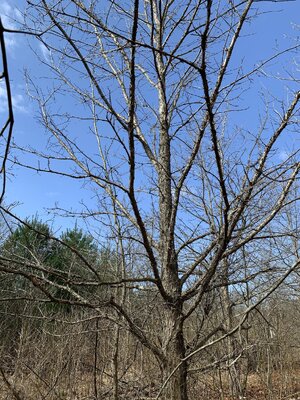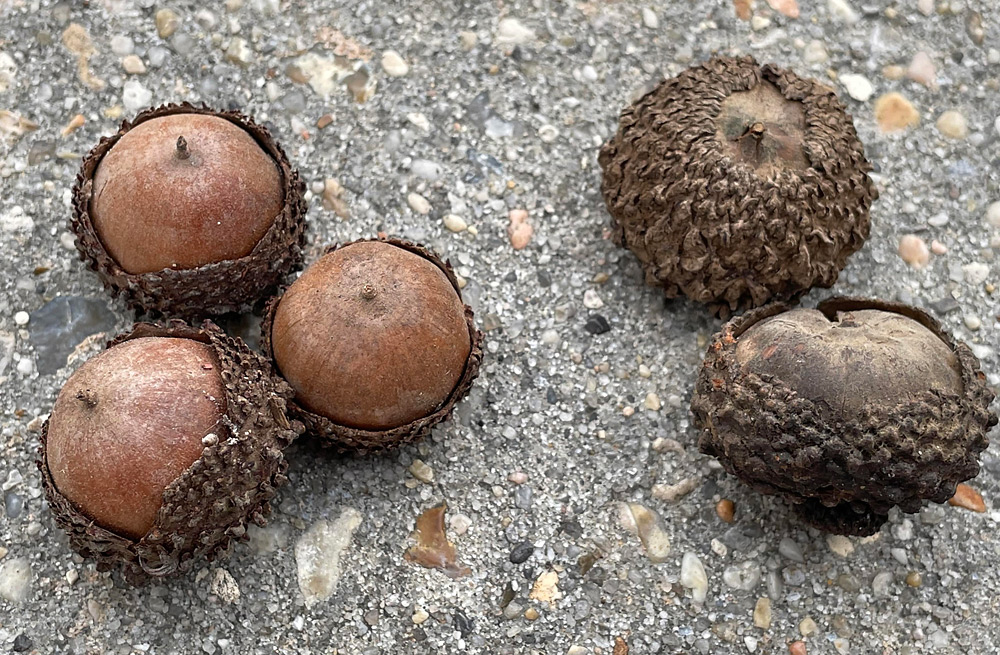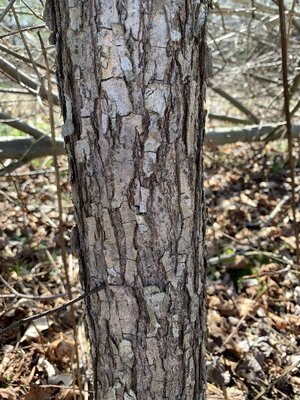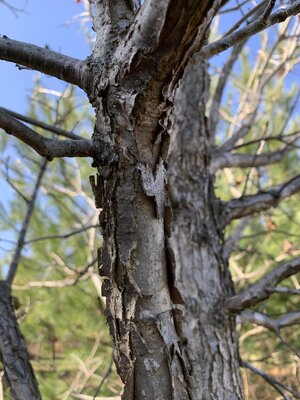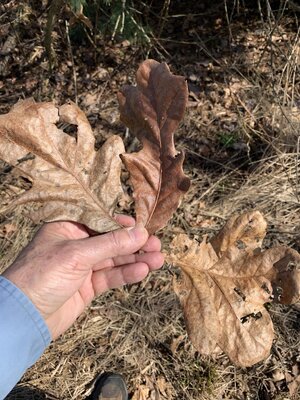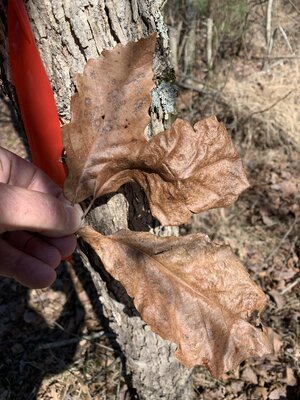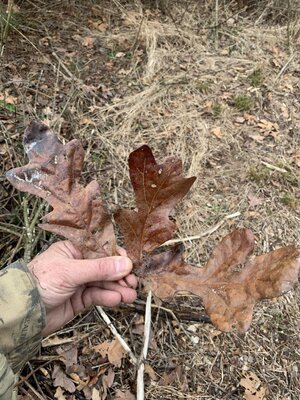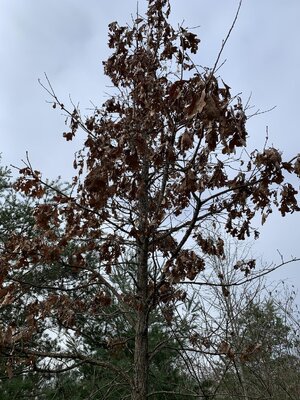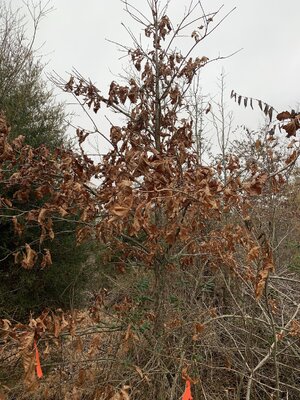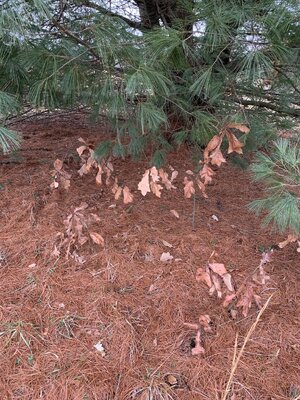Native Hunter
Well-Known Member
Overcup Oak - Quercus lyrata
Now we are going to cover Overcup Oak like the big one pictured above. Here is some information on it:
· This oak typically grows in areas that are heavily flooded in winter and early spring. It can grow well in other less wet areas, but taller oaks or other tall species can possibly shade it out. However, in these wet areas, no other oak and few other trees can compete with it.
· Due to the above, this oak doesn't leaf out until a month later than other oaks. This is nature’s way of giving the spring waters time to go down before the tree comes out of winter dormancy.
· This is not one of the top oaks for deer, but it is a good one and has its place. I’m glad to have a few of them but probably have a few more than I want. I would prefer more Swamp Whites and Swamp Chestnuts rather than Overcup.
· The acorn is very unusual. First of all, the acorn has a spongy buoyant cup that covers nearly the entire nut. This too plays well to the location the tree is usually found. The flood waters carry the floating acorns to many locations so that the tree can spread.
· Overcup acorns are some of the first to fall. They are not preferred by deer because their tannin levels are more like red oaks. Deer will eat them early on but move to other white oaks when they start dropping.
· However, Overcup acorns don’t sprout in the fall like other white oak family acorns. They wait until spring. Late in the year, deer may move back to them when the more preferred acorns are gone. The acorns won’t rot over winter like other white oaks.
· The species has a tendency to keep lower limbs for a long time – similar to how Pin Oak does. However, the branches don’t droop down like Pin Oak.
· Overcup Oak wants to to spread out more than any other oak I planted. When it can find room, it will get wide quickly. When crowded, it will grow more vertically.
· I’m not sure how the Overcups are doing on acorn production. I will try to watch closer this fall.
· The tree is best identified by its leaves – See link below:
· For other information that I have not covered above, I am including a link to the USDA data below:
OVERCUP OAK (usda.gov)
I have several of these Overcups, and many of them have already carved out their spot on my land. No other oak has grown as big, except that some crowed red oaks have grown a little taller, and a few of the bigger Swamp Chestnut Oaks are about the same height. Overcup was not in my tree order. Someone at the nursery (either accidentally or on purpose) put in a bundle of Overcups that was supposed to be White Oaks (Q Alba). I only noticed this in a few years after planting when I saw the trees leaf out a month later than Q Alba.
This is not a great picture of the leaves, but you can see the link above from USDA for a better picture.
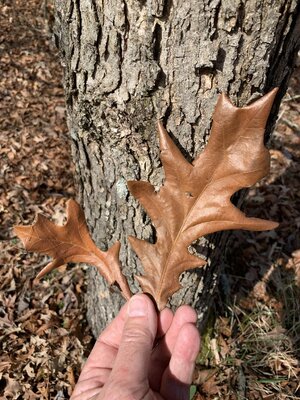
Note the lower limbs on this one still holding tight:
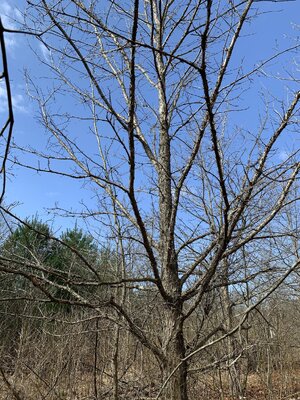
This picture shows one of the bigger trees but not the largest.

That’s about it guys for Overcup Oak. Let me know if you have any questions. In a few days we will move on to another Oak. I’m probably going to do Swamp White Oak - Quercus bicolor next but may change my mind.
Now we are going to cover Overcup Oak like the big one pictured above. Here is some information on it:
· This oak typically grows in areas that are heavily flooded in winter and early spring. It can grow well in other less wet areas, but taller oaks or other tall species can possibly shade it out. However, in these wet areas, no other oak and few other trees can compete with it.
· Due to the above, this oak doesn't leaf out until a month later than other oaks. This is nature’s way of giving the spring waters time to go down before the tree comes out of winter dormancy.
· This is not one of the top oaks for deer, but it is a good one and has its place. I’m glad to have a few of them but probably have a few more than I want. I would prefer more Swamp Whites and Swamp Chestnuts rather than Overcup.
· The acorn is very unusual. First of all, the acorn has a spongy buoyant cup that covers nearly the entire nut. This too plays well to the location the tree is usually found. The flood waters carry the floating acorns to many locations so that the tree can spread.
· Overcup acorns are some of the first to fall. They are not preferred by deer because their tannin levels are more like red oaks. Deer will eat them early on but move to other white oaks when they start dropping.
· However, Overcup acorns don’t sprout in the fall like other white oak family acorns. They wait until spring. Late in the year, deer may move back to them when the more preferred acorns are gone. The acorns won’t rot over winter like other white oaks.
· The species has a tendency to keep lower limbs for a long time – similar to how Pin Oak does. However, the branches don’t droop down like Pin Oak.
· Overcup Oak wants to to spread out more than any other oak I planted. When it can find room, it will get wide quickly. When crowded, it will grow more vertically.
· I’m not sure how the Overcups are doing on acorn production. I will try to watch closer this fall.
· The tree is best identified by its leaves – See link below:
· For other information that I have not covered above, I am including a link to the USDA data below:
OVERCUP OAK (usda.gov)
I have several of these Overcups, and many of them have already carved out their spot on my land. No other oak has grown as big, except that some crowed red oaks have grown a little taller, and a few of the bigger Swamp Chestnut Oaks are about the same height. Overcup was not in my tree order. Someone at the nursery (either accidentally or on purpose) put in a bundle of Overcups that was supposed to be White Oaks (Q Alba). I only noticed this in a few years after planting when I saw the trees leaf out a month later than Q Alba.
This is not a great picture of the leaves, but you can see the link above from USDA for a better picture.

Note the lower limbs on this one still holding tight:

This picture shows one of the bigger trees but not the largest.

That’s about it guys for Overcup Oak. Let me know if you have any questions. In a few days we will move on to another Oak. I’m probably going to do Swamp White Oak - Quercus bicolor next but may change my mind.
Attachments
Last edited:

